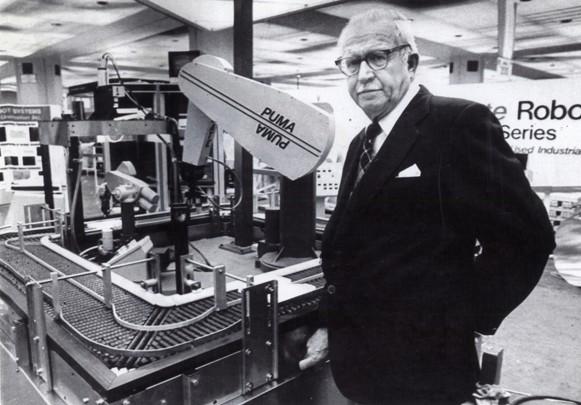Robotics
What Is Robotics?
Robotics is the intersection of science, engineering and technology that produces machines, called robots, that substitute for (or replicate) human actions. Pop culture has always been fascinated with robots. R2-D2. Optimus Prime. WALL-E. These over-exaggerated, humanoid concepts of robots usually seem like a caricature of the real thing...or are they more forward thinking than we realize? Robots are gaining intellectual and mechanical capabilities that don’t put the possibility of a R2-D2-like machine out of reach in the future.
WHAT IS A ROBOT?
A Brief History of Robots
Robots seem like a modern day invention, but in reality evidence suggests that automations were created for everything from toys to parts for religious ceremonies in ancient Greece and Rome. Leonardo da Vinci sketched plans for a humanoid robot in the late 1400s. Jacques de Vaucanson was famous in the 18th century for his automated human figure that played the flute and for a duck that could flap its wings. These early automations were often controlled by ropes, wheels, air or water.
Many automated inventions that could behave in similar fashion to a human have been documented throughout history. Most were created largely for entertainment purposes. Fiction writers found great success in writing about robots in all sorts of situations which meant that the robot was part of daily conversation and imagination. Elektro, the first speaking humanoid robot built in 1939, could speak 700 words and perform tasks such as blowing up balloons. In 1956 George Devol and Joseph Engelberger formed the world's first robot company. By the 1960s robots were introduced into the General Motors automobile plant in New Jersey for moving car parts around. Robots continued to develop and can now be found in homes as toys, vacuums, and as programmable pets. Today robots are a part of many aspects of industry, medicine, science, space exploration, construction, food packaging and are even used to perform surgery. Watson, a robot with artificial intelligence from IBM, defeated the human players in an episode of Jeopardy!. There are social robots with facial expressions, unmanned aerial vehicles (UAVs) that monitor hurricanes, robo-bees that help with crop pollination, and much more. The science of robotics will continue to advance in ways we can hardly imagine!
So Why Use Robots?
One reason robots are used is that it is often cheaper to use them instead of humans. It is easier to have robots do some jobs, and sometimes using robots is the only possible way to accomplish some tasks. Robots can explore inside gas tanks, deep under the ocean, or inside volcanoes. They can explore the surface of Mars, search for survivors after a disaster, or go to dangerous places where extreme temperatures or contaminated environments exist.
Robots can also do the same thing over and over again without getting bored. They can drill, they can weld, they can paint, they can handle hazardous materials, and in some situations, robots are much more accurate than a human ‐ which can cut back on production costs, mistakes or hazards. Robots never get sick, don't need sleep, don't need food, don't need to take a day off, and best of all they don't ever complain! There are a lot of benefits to using robots.




Comments
Post a Comment